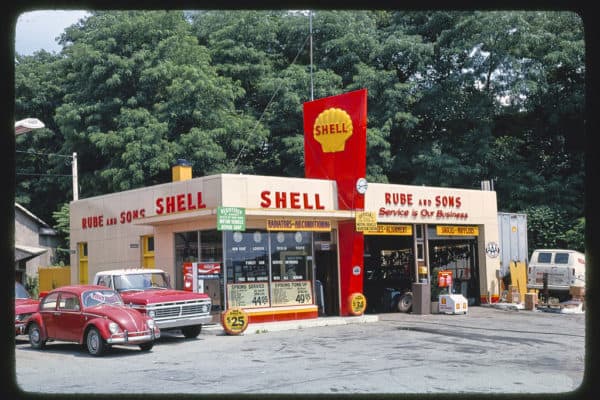
 A new study from Columbia University has found that toxic fuel vapours released from service stations are much more dangerous than previously thought and are at levels ten times higher than mandated by environmental regulations.
A new study from Columbia University has found that toxic fuel vapours released from service stations are much more dangerous than previously thought and are at levels ten times higher than mandated by environmental regulations.
Underground gasoline tanks at service stations have vents to allow any pressure or vacuum built up in the tank to vent, but while many jurisdictions have environmental standards concerning the amount of vented gasoline and the required setback for vent pipe placement, little is known about when fuel vapours —including benzene, a known carcinogen— releases occur, nor is it known how extensive they are or their potential health effects.
Gas Station Fumes Toxic
The researchers used gas flow meters attached to venting pipes at two large gas stations in the United States and found that over a three-week period, the average daily venting was roughly 210 grams of gasoline per 1000 litres of fuel dispensed at one station and 170 grams per 1000 litres at the other. By comparison, the California Air Pollution Control Officers Association uses an estimate of roughly 64 grams per 1000 litres.
The group also tested emissions at a distance from gas vents, finding that the one-hour health hazard to humans exposure to benzene was reached at both gas stations starting at 50 metres away, while the two-week maximum exposure level was exceeded at a distance of only seven and eight metres, respectively, from the tank vents. In all, the researchers concluded that recorded vent emission factors were more than ten times higher than estimates normally used to derive setback distances for gas stations.
“We found evidence that much more benzene is released by gas stations than previously thought. In addition, even during a relatively short study period, we saw a number of instances in which people could be exposed to the chemical at locations beyond the setback distance of .09 km,” said first author Markus Hilpert, PhD, associate professor of Environmental Health Sciences at the Columbia Mailman School.
“Officials should reconsider their regulations based on these data with particular attention to the possibility of short spikes in emissions resulting from regular operations or improper procedures related to fuel deliveries and the use of pollution prevention technology,” Hilpert said.
So is wearing a mask to filter the bad air the solution? Another recent study, which may be admittedly biased because it was paid for by Kimberly-Clark Professional, a division of personal hygiene company Kimberly-Clark, suggests that would only get you halfway. That study found gas pump handles are among the dirtiest surfaces we touch on a regular basis.
““It comes down to the fact that nobody cleans the things that you’re going to touch on a daily basis,” Dr. Kelly Arehart, program leader of Kimberly-Clark’s Healthy Workplace Project, told Reuters.
The study was published in the journal Science of the Total Environment.
Leave a Reply
You must be logged in to post a comment.




 Share
Share Tweet
Tweet Share
Share




Comment